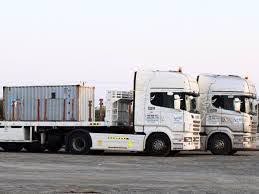How to Make a Barcode in 3 Steps with a Free Barcode Generator

Do you need to make a barcode but don’t know how? Don’t worry, we’re here to help with this easy 3-step guide to making your own barcode using a free barcode generator and your very own device! This guide shows you how to make the specific type of barcode commonly used in retail. If you’re looking for something different, like UPC, Bookland or Code 39, check out our other guides on how to make those types of barcodes! For now, let’s get started with step 1!
Step 1: Making your barcode
You can make a barcode for free using an online generator like this one. Simply enter the information you want to include in the barcode and click generate. This will create a barcode image that you can download and print. You can also copy and paste it onto any other website or into any other document as well. Step 2: Printing your barcode: Printing your new, colourful, customizable code is easy! Just use these instructions on how to set up a printer if you need help setting up yours first.
If you have a printer installed and ready to go, open your word processing program and insert the generated barcode into the text where you want it printed. Now just select print from your menus and follow the prompts until it’s all finished printing out. Voila! Your custom-made barcode is complete. To customize the design of your barcode, click edit at the top of the page to access more options. In step three we’ll show you how to place your newly created barcode on something so others can read it too.
Step 2: Printing your barcode
Now that you have your barcode, you need to print it. The most important part of printing your barcode is making sure that the dimensions are correct. If the barcode is too small, it will be hard to scan. If it’s too large, it will take up too much space on your product. The best way to ensure accurate dimensions is to use a template. You can find free barcode templates online, or you can purchase them from a company that specializes in barcodes. However, before you buy any templates make sure they work for what you’re using them for.
For example, if you’re using a PDF file for your product label then go ahead and buy the PDF version of their barcode templates instead of opting for something else. After buying the template, open it in Adobe Acrobat Pro and size it to match your needs.
After this you’ll need to save your newly-sized barcode as an image (.jpg). Finally, upload this image into Photoshop or GIMP and change the color settings so that black becomes transparent (this step may vary depending on which program you use).
Step 3: Getting the best quality from your barcode label
The quality of your bar code label is important for two reasons. First, if the bar code is unreadable, your product won’t scan and customers will be frustrated. Second, a poor quality label can damage your product, making it look unprofessional. To get the best quality from your bar code label, you’ll need:
- A printer that produces high-quality prints
- A well-made sticker or film
- A durable backing material
- Paper that is not too thin or too glossy (a matte finish works best)
- Inkjet printer ink that is designed for use on paper (don’t use standard office ink)
- Laser toner designed for printing on stickers or films
- Stickers or films made out of good materials (not thin vinyl) last much longer than those made out of low-quality plastic.
- When choosing an adhesive to stick your bar code label onto the back of your product, make sure that it will stick well but also release easily without leaving any residue behind. Vinyl labels work well because they peel off easily when you want them to and they have a strong adhesive so they stay stuck even after months of wear and tear.








